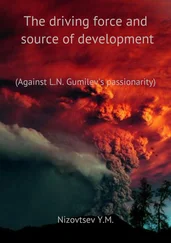She’d become an expert on mining not out of any love for digging up rocks, but for the simple fact that she was tasked to North Korea’s economic sector and that was their principal industry.
NGA geospatial technology was much more than looking at pictures and maps. The agency used all manner of data: spaceborne, airborne, seaborne, and landborne intelligence platforms at their disposal, as well as pulling the activity on cell-phone towers and even social media.
But much of that didn’t apply in North Korea. NGA had little to no visibility on cell-phone data inside the Hermit Kingdom, and social media there was banned. But there were other geospatial analysis tools at her disposal—satellite photos and videos ferried out of the country by smugglers and defectors; even government propaganda information could be gleaned to find hidden nuggets of information.
This morning she decided she’d take a look at some new images from one of the National Reconnaissance Office’s KH-12 satellites. She pulled up the files on one of the three twenty-seven-inch monitors in front of her, and oriented herself with the global positioning information on the data screen next to it.
She spent a few minutes looking at a road project to a tungsten mine just outside Pyongyang, saw that nothing much had changed since she’d last looked in on the location a month earlier, and she noted it in her log.
Then she typed in the coordinates to the Chongju rare earth mineral mine.
A year earlier she had spent virtually all her time watching activities at the Chongju mineral mine. But that was when the Chinese were there, when there was real development going on. America’s policy makers were interested back then, because rumors out of China said the deposit in the mountain there could have amounted to trillions of dollars for North Korea. This was something that worried the U.S. government, so Annette had worked long hours tracking the progress on the site. She’d discovered small amounts of ore, just a few rail cars, traveling north from the open-pit mine to the Chinese border, presumably for processing at one of China’s rare earth refineries. When the Chinese were thrown out—Annette had received an intel briefing from the CIA that suggested they left because North Korean leader Choi invalidated their mining contract—interest in the mine quickly waned. Everyone concluded that the North Koreans wouldn’t be able to do much more than continue to dig a small amount of ore out of the rocks and then ship it up to China for processing. Through her own work she determined the mine would reach only about four percent of its yearly production output capability without help from the Chinese.
When Chongju went on “life support,” she refocused her attention on other mines in other parts of the DPRK, but she circled back every month or so to peek in on the sat images over Chongju. Each time she had done this over the past year she saw that the North Koreans were still trying to get something out of the site, but it was a shell of the operation it had been when they were partnered with those who knew what the hell they were doing.
Looking over the newest digital images from the KH-12 satellite, Brawley was happy to see there were no clouds over the site. The KH-12 sat had radar imagery capability, as well, but this wasn’t the same as looking directly at the site through an optical lens.
She scanned the images the way she always did, slowly and methodically. First she ignored the buildings around the mine and focused directly on the open pit gouged out of the mountainside. The resolution of the KH-12 satellite cameras was fantastic. She could make out bulldozers and other earth-moving equipment; she even saw individual men, their shadows a further indication of what a clear day it was.
But nothing much was going on in the pit, so she began scanning to the south; the small city of Chongju was here, a few kilometers from the site itself, and she always liked to take a look at the train station and the freight storage lots nearby to see if it looked like there was any new industrial or commercial activity anywhere in the town that might relate to the mine.
This morning she saw something immediately. That’s odd, she said to herself. Sixteen rectangles were lined up in a parking lot next to the one low and squat hotel near the train station. She never would have noticed the anomaly in the middle of the town if not for the fact she’d spent something in the neighborhood of two hundred hours looking at images of Chongju a year earlier, and her mind was programmed to burn images into it—she knew the layout of the town even now—certainly not every building, as there were hundreds, but the main clusters of development. These rectangles hadn’t been there even last month. She would pull up the older images to double-check, but she was too sure of herself and too curious to do that now.
She knew what the rectangles were, because they were a common sight at mines and construction locations. They were portable buildings, like those used for temporary site offices or modular temp housing. Laid out as they were here, in neat rows lined up alongside the one hotel in the city and the train station, she knew this was housing brought in by the government for nonresident workers.
She could tell these were housing structures also because she saw a cluster of small outbuildings around an open-pit fire, and recognized it as a crude food-preparation facility.
Sixteen temporary buildings like these could house, Annette knew, a hundred fifty or more workers. But workers for what ? There were a few factories in Chongju, but nothing that large. The only heavy industry around here was the mine.
She scanned back up to the mine. There was no major operation going on there, neither digging on the mine nor construction on other structures around it. She looked all over the city again, hunting for any signs that some new building or massive new statue of the Dae Wonsu was going up. When that turned up nothing, she scanned the roads around the town, and then the railroad tracks, trying her best to find any new project that would employ one hundred fifty workers.
It took her an hour to do this, but at the end of that hour, she had nothing to show for it.
But Annette Brawley had learned to be dogged and driven in the Army, and she had learned the nuances of her craft in intelligence school. She knew she was onto something, so she kept at it.
In a country like North Korea, where a lot of military activity takes place underground to stay hidden from satellites, she began to suspect she had uncovered something to do with the missile industry. The Sohae Satellite Launching Station was on a small peninsula jutting out into Korea Bay just twenty-five miles to the southwest; just maybe there was an underground secret project going on all the way over here.
It didn’t track with anything she knew about how the North Koreans operated, but she decided she’d talk to her colleagues in her analytical group who spent their days fixated on Sohae and get their take on it.
She was just about to break for lunch, a little frustrated that she felt like she’d wasted two hours on a futile hunt, when a thought occurred to her. There was a hydroelectric dam west of the Chongju mine, probably no more than ten minutes’ drive on the paved roads in the area. It was an hour away from where the temp housing was located, but still she wondered if perhaps the guest workers were doing some refurbishing on the dam there.
She had to pull away from the enlarged image on her monitor to find the general area of the dam, and then she zoomed back in. She scanned along the dam, looked for any sign work was going on, but again she found nothing.
Shit. It was the last large structure in the area she could recall.
Читать дальше












